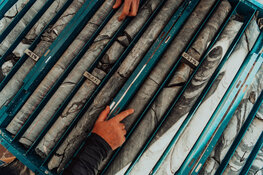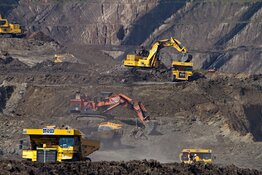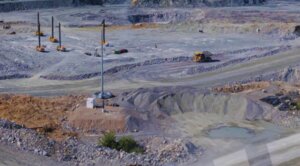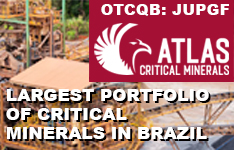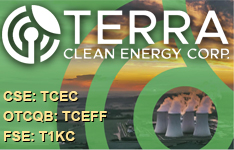Paolo Lostritto: We are seeing two things. One is ongoing cost creep and eroding margins. The second is a dampening of valuations as the market tries to assess the resurgence of sovereign debt risk and the potential of an unorganized breakup in Europe, as signaled by bond yields.
TGR: How have those factors changed your thesis for gold equities?
PL: This situation is ultimately a positive for gold as there are only two ways out. One, you can try to devalue your currency, which a lot of are countries are trying to do and should lead to an inflationary recession. The second is having the multiple layers of debt collapse onto itself, leading to a deflationary recession.
The gold market is struggling to figure out which scenario will play out. Gold bullion protects you in both scenarios. In an inflationary recession the metal outperforms. In a deflationary recession, gold equities would eventually do better.
TGR: Perhaps, but that was not the case for gold equities in the fall of 2008 and early 2009.
PL: In 2008, the market was pricing in the risk of a depression. As a result, gold behaved as the last source of liquidity. Yes, gold came off a bit, but it worked as the go-to source of liquidity, the insurance policy that worked.
Equities also behaved the way they were supposed to—the multiples contracted initially. But on the back of reduced costs, margins expanded and project internal rates of return improved. Once the initial depression scare passed, the precious metal equities outperformed.
TGR: What are you looking for in gold equities?
PL: We are looking for companies that can fund their growth organically on their own, companies with strong balance sheets that do not have to go to the equity markets to survive.
Development companies are struggling right now because the equity markets are not open to funding exploration or development.
TGR: First Majestic Silver Corp. (FR:TSX; AG:NYSE; FMV:FSE) just did a friendly merger with Silvermex Resources Inc. (SLX:TSX; GGCRF:OTC). Are we likely to see more deals like that?
PL: You will probably see two types of transactions. First, development mining companies that have run out of options will be looking to do a deal out of necessity. Second, we believe there are more opportunities for activity involving royalty and streaming companies.
This is a perfect environment for companies like Franco-Nevada Corp. (FNV:TSX), Sandstorm Gold Ltd. (SSL:TSX.V) and Royal Gold Inc. (RGLD:NASDAQ; RGL:TSX). It opens the door for them to get involved with development projects that may otherwise have been supported by the equity markets.
TGR: You and your team use a number of metrics to compare apples to apples among precious metals companies. Please tell our readers about a couple of your favorite metrics and how you calculate them.
PL: We are big believers in both net asset valuation and price-to-cash-flow growth valuation.
Over the last 12 months, we believe the market has applied a higher discount rate to future cash flows that have been trimmed to account for higher costs.
We are seeing a transition from a historic premium applied to precious metal companies to one with a more traditional valuation methodology. Precious metal companies are being modeled similar to base metal companies. We no longer see the premium we used to see in gold companies, in part due to cannibalization from exchange-traded funds. Many gold companies are trading at 12–15% discount rates using the forward curve.
Using the price-to-cash flow metric, these stocks typically trade anywhere from 10 to 12 times cash flow. Right now, some of them are trading as low as three to five times cash flow 2013 estimates.
TGR: So there are bargains to be had?
PL: Right now, our view is that investors should take a conservative stance. Focus on companies that have cash, cash-flow growth and solid balance sheets. The old saying is that the markets can stay irrational a lot longer than you can stay solvent. You want to have a defensive portfolio in this market, until we get a clear signal that deflation risk has been reduced. The recent Long-Term Refinancing Operations (LTRO) program from Europe only managed to give us two months of reprieve before the second LTRO program at the end of February disappointed relative to the sovereign debt risk.
TGR: Let's talk a bit about the companies you cover that have gold projects in Burkina Faso, a small country located between Ghana and Mali. It is home to about 30% of the Birimian greenstone belts of West Africa. What are the main characteristics of gold deposits native to these greenstone belts?
PL: We are in the early stages of defining what Burkina Faso has to offer in terms of exploration.
A lot of exploration dollars have gone into West Africa on the back of efforts from companies like SEMAFO (SMF:TSX), Orezone Gold Corporation (ORE:TSX), AngloGold Ashanti Ltd. (AU:NYSE; ANG:JSE; AGG:ASX; AGD:LSE), Gold Fields Ltd. (GFI:NYSE), Newmont Mining Corp. (NEM:NYSE), Randgold Resources Ltd. (GOLD:NASDAQ; RRS:LSE), Perseus Mining Ltd. (PRU:TSX; PRU:ASX), Keegan Resources Inc. (KGN:TSX; KGN:NYSE.A), Volta Resources Inc. (VTR:TSX), IAMGOLD Corp. (IMG:TSX; IAG:NYSE), Red Back Mining [now Kinross Gold (K:TSX)] and Avion Gold Corp. (AVR:TSX; AVGCF:OTCQX). It will be up to these companies to drive the next leg of exploration growth.
TGR: Why would companies look for gold deposits in the greenstone belts of West Africa instead of Ontario or Québec, for example?
PL: The influx of money into West Africa was fueled by the large deposit discoveries and a favorable tax environment.
However, labor costs, royalties and taxes in West Africa have been increasing. The recent increase in royalties and taxes has caused some deviation in this flow of funds.
TGR: Did the recent coup in Mali cause you to rerate any of the companies you cover?
PL: We are watching that situation very closely in light of the ties to al-Qaeda in parts of Northern Mali. If this trend continues, it could have implications for surrounding countries and how we value them.
TGR: Does jurisdiction risk outweigh the exploration potential in West Africa?
PL: We believe there are still elephants to be found in that part of the world. But the discount rate that one uses to value these assets will have to change from country to country, and jurisdiction to jurisdiction, relative to the associated risk.
For example, we use a higher discount for a company in Bolivia versus a development story in West Africa, versus a development story in Ontario.
TGR: Have you already beefed up your discount rates for companies operating in Burkina Faso, Ghana or Mali?
PL: We have not. In our current view, projects in Burkina are politically safe. We are keeping a close eye on Mali. If things start to spread to surrounding countries, we may have to reassess the discount rate we apply.
TGR: As far as operating mines go in Burkina Faso, it is hard to beat IAMGOLD's Essakane mine, which produced 340,000 ounces (oz) in 2011, at a cash cost of roughly $488/oz. Do you believe IAMGOLD will expand the resource through the drill bit or is a takeover more likely?
PL: IAMGOLD has said it is trying to expand resources around Essakane through the drill bit. It is spending a fair amount of exploration dollars there.
The company wants to repeat what it did at Rosebel: expand in and around existing infrastructure to leverage its initial investment and improve internal rates of return.
IAMGOLD has a billion dollars in capital. Its after-tax hurdle rates, if I recall correctly, are something in the order of 10% to 12% in North America, 12% to 15% in South America and 15% to 17% for West Africa.
TGR: Despite the pullback in some of the exploration plays in West Africa, do you see more value in companies operating there than a couple of months ago?
PL: I would say there is a lot more value here in North America when you adjust for the risk profile. A number of these stocks have been hit in tandem when it comes to development stories.
Rainy River Resources Ltd. (RR:TSX.V) and Romarco Minerals Inc. (R:TSX) in North America have been hit just as hard as development stories in West Africa.
TGR: Can you give us the names of some companies in the development stage in West Africa on which you have buy recommendations?
PL: In the development stage, I cover Orezone, IAMGOLD and Volta Resources.
TGR: Orezone expects to issue a feasibility study on Bomboré in Q412. What does the market want to see in that study?
PL: Although the market is shying away from low-grade deposits in this current environment of increasing capital and operating costs, Orezone has the advantage of having a soft rock development component, which should result in a lower capital cost and operating intensity. We expect the feasibility study to focus on these advantages and yet still produce a soft rock reserve close to 2 million ounces.
TGR: Right now, Bomboré is valued at an enterprise value of $38/oz, just about average for the companies you cover. What does that say to you?
PL: That metric tells me the market is applying a higher discount rate for the sulfide ounces that Orezone is finding.
But that is just one of many metrics. In my mind's eye, the real value-added opportunity is demonstrating soft-rock versus hard-rock ounces. The company should be able to add value through its soft-rock development.
Our target for Orezone is $4.60. It is now trading at $1.69.
TGR: What can you tell us about Volta?
PL: We expect a prefeasibility study from Volta this quarter. This is another bulk-tonnage, low-grade project, with less soft-rock material than Orezone's but a more compact deposit, which should allow the company to capture economies of scale. We expect the prefeasibility study to highlight bigger trucks to drive down unit operating costs.
Our target on Volta is $2.75 a share; it is currently trading at $0.83.
TGR: So, an outperform rating?
PL: Yes, for both Orezone and Volta, but we apply a speculative risk rating for both companies because they are development stories.
TGR: Volta's project isn't that far from Essakane. Could it become a target?
PL: I would say that they are too far apart. There might be synergies between Orezone's Bomboré and Volta's Kiaka project, along with Channel Resources Ltd. (CHU:TSX.V)—probably related to electrical grid power.
TGR: Channel Resources is in the same neighborhood. What can you tell us about it?
PL: Channel is a smaller, earlier-stage exploration play along the Markoye Fault.
Channel does not yet have a resource, although one is expected shortly. The company has some interesting drill holes along the Markoye Fault, but more work is necessary to develop it. It is worth keeping an eye on.
TGR: Channel recently completed 15,000 meters of drilling. Is that above average for a company of its size in that area?
PL: Yes, I would say so. The company had some interesting targets. However, the market is not paying for drill holes at the moment. It is paying for free-cash flow. A substantial discount is being applied to all exploration and development companies right now.
TGR: What three things should our readers know before taking a position in a West African gold play?
PL: First, there are still elephants to be found there. Second, focus on names that have good infrastructure. Those companies will be better insulated against the cost inflation we're seeing in West Africa. Third, grade is king. Better grades also provide insulation against cost inflation.
TGR: What constitutes good grade there?
PL: It is a function of the dimension and characteristics of the deposit, the metallurgy and the strip ratio. For example, a project with soft rock characteristics and low strip ratio can process lower grade material than one with harder rock characteristics and a high strip ratio.
TGR: Thanks for your time.
Paolo Lostritto currently serves as a mining equity research analyst for National Bank Financial. He has formerly worked with Wellington West Mining, Scotia Capital and TD Securities. He holds a Bachelor of Applied Science degree in geological and mineral engineering from the University of Toronto.
Want to read more exclusive Gold Report interviews like this? Sign up for our free e-newsletter, and you'll learn when new articles have been published. To see a list of recent interviews with industry analysts and commentators, visit our Exclusive Interviews page.
DISCLOSURE:
1) Brian Sylvester of The Gold Report conducted this interview. He personally and/or his family own shares of the following companies mentioned in this interview: None.
2) The following companies mentioned in the interview are sponsors of The Gold Report: Silvermex Resources Inc., Franco-Nevada Corp., Royal Gold Inc., Avion Gold Corp. and Orezone Gold Corp. Streetwise Reports does not accept stock in exchange for services.
3) Paolo Lostritto: I personally and/or my family own shares of the following companies mentioned in this interview: Channel Resources Ltd. and Volta Resources Inc. I personally and/or my family am paid by the following companies mentioned in this interview: None. I was not paid by Streetwise Reports for participating in this story.


